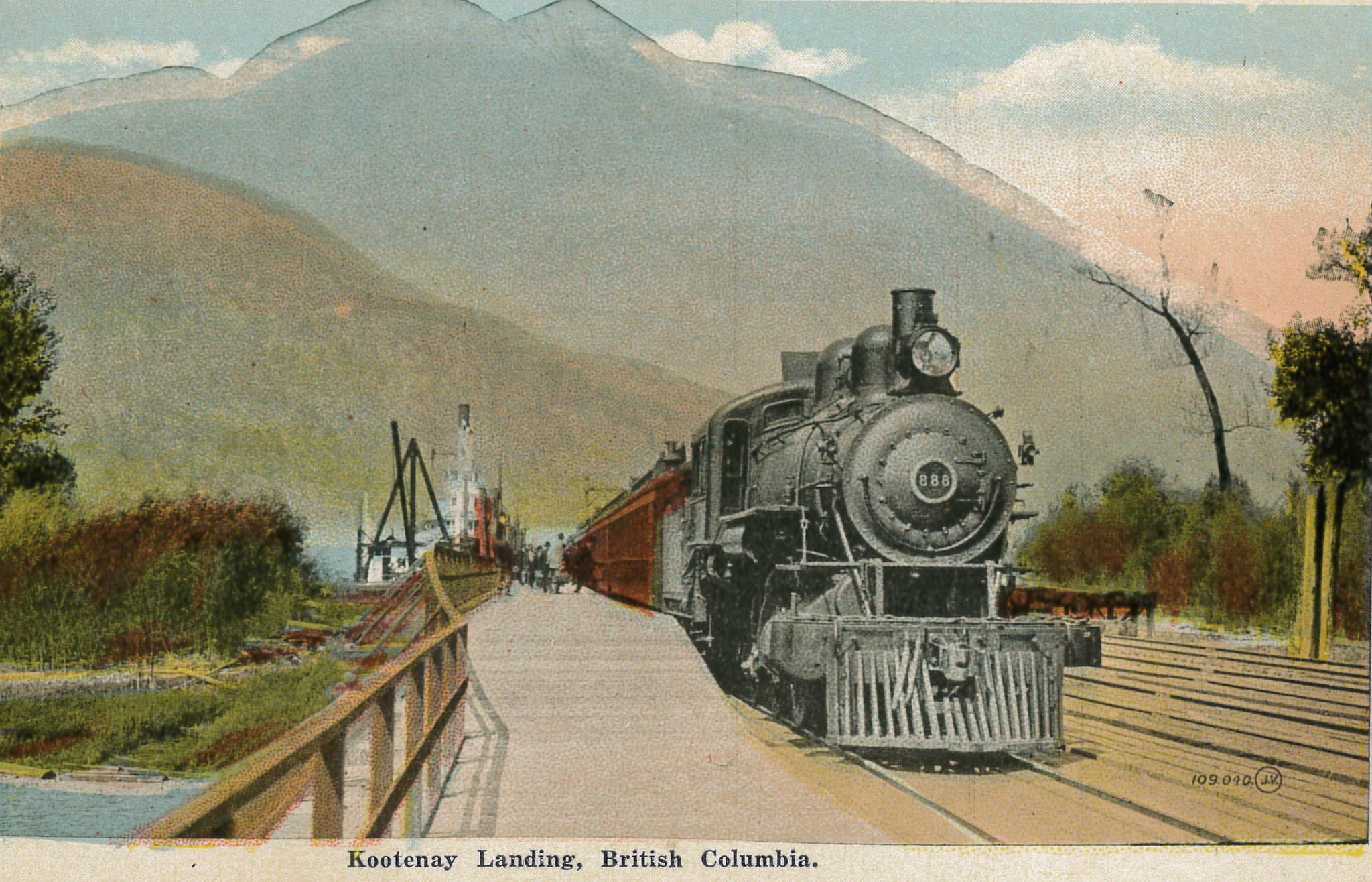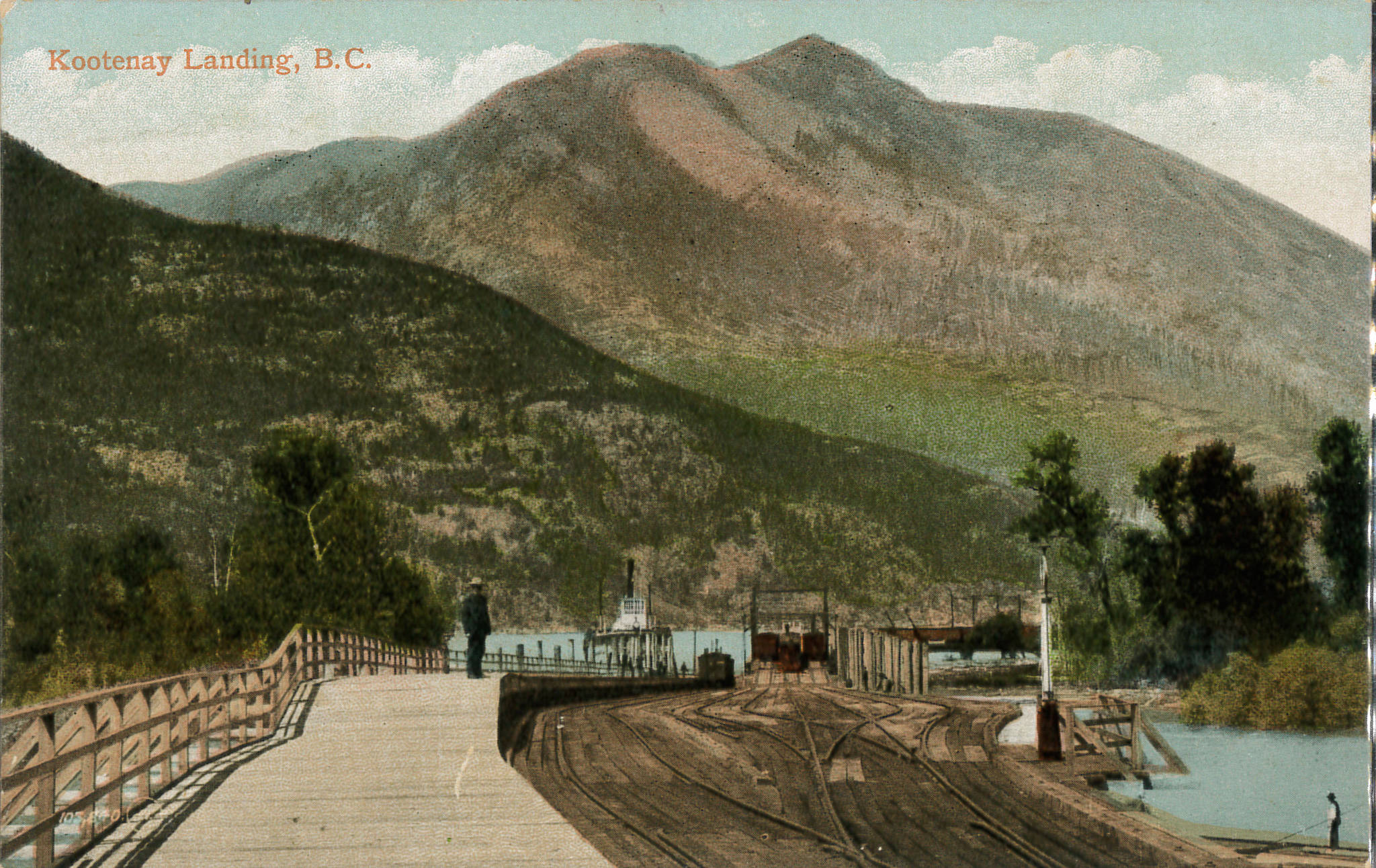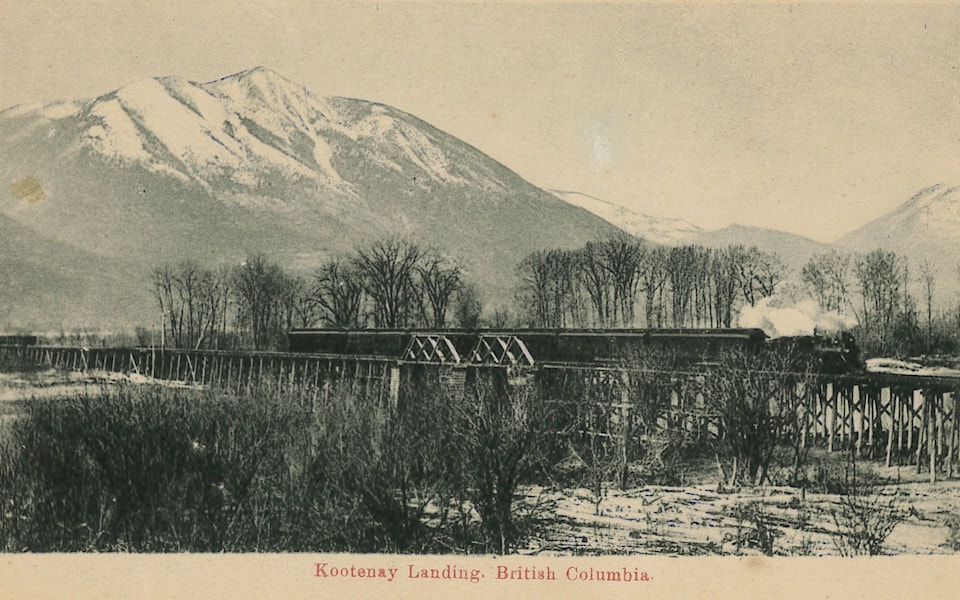Two hundred forty-fifth in a series on West Kootenay/Boundary place names
Kootenay Landing, at the south end of Kootenay Lake, was the western terminus of the CPR’s Crows Nest line. It was first mentioned in the Vancouver Daily World on Oct. 12, 1898: “A Nelson dispatch of the 7th inst., states that the first train over the Crow’s Nest Pass line arrived at Kootenay landing the previous evening.”
After a rail line was completed along the west side of the lake’s south arm in 1930, Kootenay Landing lost its importance as a railway point, and the name fell from common use, although it was officially adopted in 1947 and remains on the books.
Two other related names: Kootenai Landing was on Lake Pend Oreille, Idaho in the 1860s and Kutenai Landing was a housing development in Nelson that never got off the ground. The latter was first mentioned by name in the Nelson Daily News of Nov. 4, 2005: “The development, called Kutenai Landing, will include 100 seniors’ apartments and 120 residences …”
(Kootenai is the American spelling of Kootenay; Kutenai is an alternate spelling that first appeared in 1901.)
PLACERVILLE
The only newspaper mention of this obscure place on the Upper Duncan River was in the Nelson Tribune on May 18, 1900. T.N. Barnard, a noted photographer from Wallace, Idaho, was quoted as discussing one of his mining claims: “It is situated a mile and a half above Placerville and the proposed line of the Kaslo and Slocan Lardo branch runs right through it.”
In the April 1965 edition of British Columbia Digest, historian Elsie Turnbull noted that during the 1890s mining rush, “Healy’s Landing, Spencerville, and Placerville became stopping places along the upper Duncan river.”
We’ve previously covered Healy’s Landing in this series, named for John (Jack) Healey (1860-fl. 1932). Spencerville was probably the same place as Spencer City, also previously covered, named for the Rev. Dr. Daniel Spencer (1851-1920).
QUIRK
This odd name was applied to a siding along the Nelson and Fort Sheppard Railway, 3.7 km north of Waneta, when BC Hydro built the Seven Mile Dam in the 1970s.
Roger Burrows speculates in Railway Mileposts British Columbia, Vol. II that it was “perhaps named for Patrick Quirk, an early resident.”
Pat Quirk (1830-1915) was born at Conmel, County Tipperary, Ireland and was among those lured to the Kootenays in the mid-1860s by the Wild Horse Creek gold rush. According to the Cranbrook Herald, “In the early days Mr. Quirk took a special delight in hiding his money in the stumps of trees. He would bore holes, into which he would place nuggets, and when on a little celebration … would create quite a lot of amusement looking for the precious metal … On one occasion he extracted from a stump no less than $2,000, which he frankly admitted having forgotten all about.”
The newspaper speculated that thousands of dollars worth of Quirk’s nuggets remained in stumps around Wild Horse.
Quirk later went to Cassiar, but returned to Fort Steele, where he worked mining claims and farmed the Daisy Ranch.
Upon selling his farm in 1912, he went to Spokane where he was reported to have suffered a severe attack of rheumatism, leaving him in hospital in critical condition. But a month later came a report that he had actually left Spokane soon after his arrival by train for Portland. He planned to visit with a friend for a few days, then continue on to California, but never made it to the friend’s place and was reported missing to police.
Quirk must have turned up. Although there’s no word where he was, we know he died in hospital in Portland on Aug. 30, 1915.
There is no sign that he ever lived near Waneta, so the connection to the railway siding is tenuous. A couple named Edward and Agnes Quirk lived in Rossland in 1901, but there is no obvious reason why the siding might be named after them.
The name is no longer used.
REFFEK
This unusually-named station was at the BC Copper Company’s Jackpot mine on the CPR’s Phoenix spur. It was referred to during construction as the Wellington Camp spur.
The new name was announced in the Phoenix Pioneer of Oct. 8, 1910: “Reffek is the official designation of the terminus of the new CPR branch to Wellington camp.”
Reffek is Keffer backwards and Frederic Keffer was a manager of the BC Copper Company. Why not just name it Keffer? Perhaps to avoid confusion with a railway point called Keefers on the CPR on the west side of the Fraser Canyon north of Hope.
The name is no longer used.


